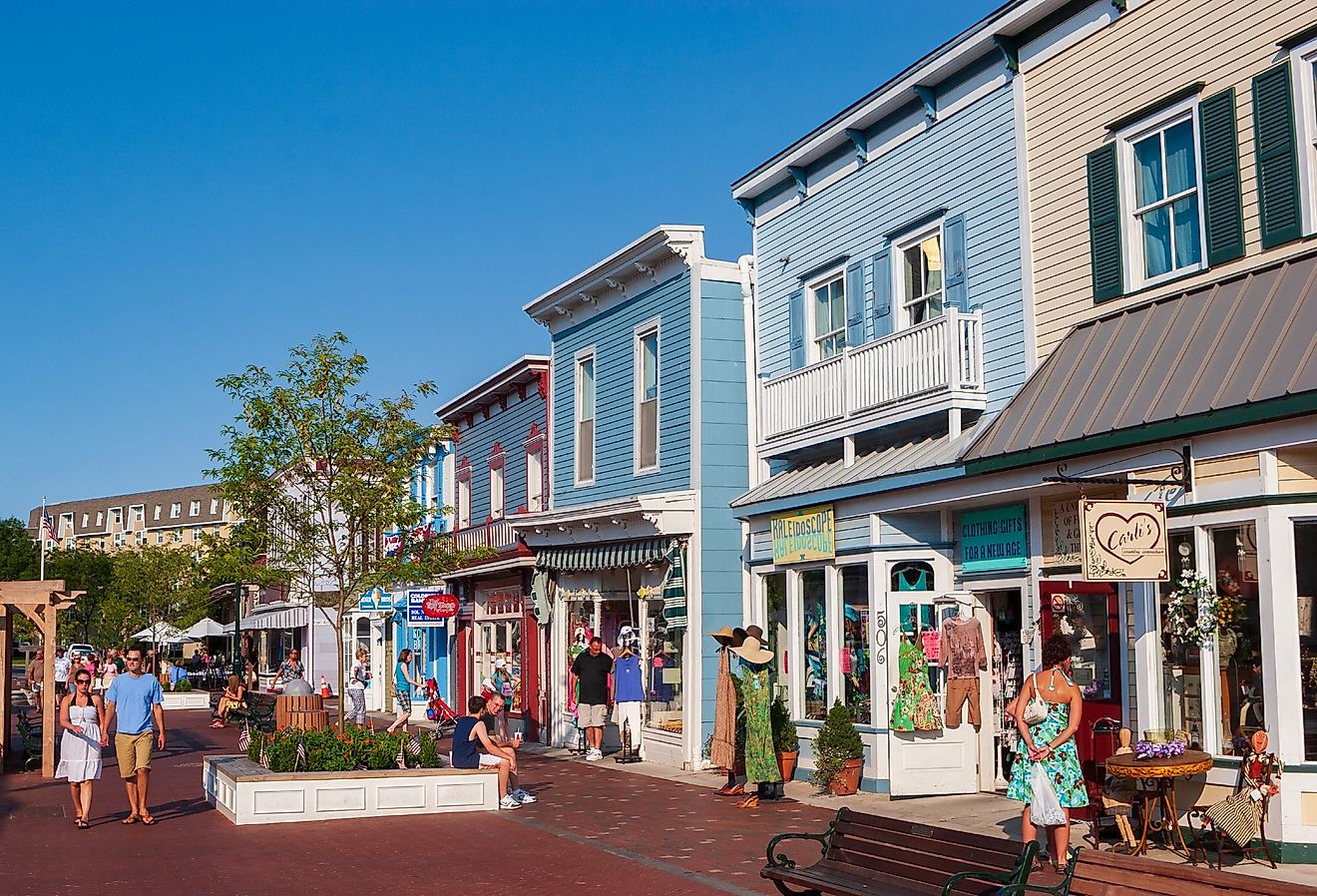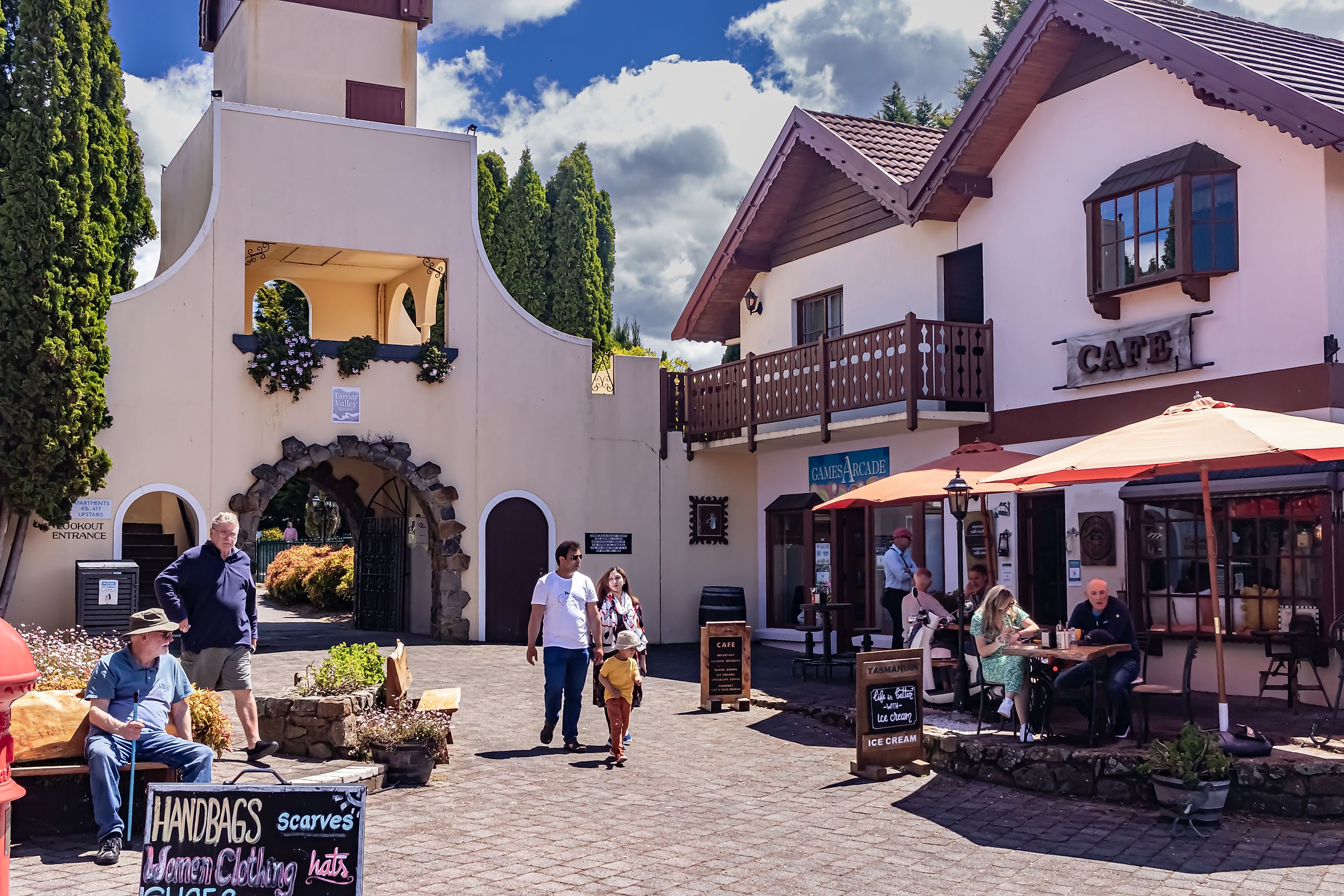
8 Whimsical Towns in Tasmania
Tasmania, often called the “Apple Isle,” sits 150 miles south of mainland Australia. Renowned for the cleanest air in the world, Tasmania offers spectacular coastal views, majestic mountain summits, and lakeside tranquility. As Australia’s only island state, it is home to unique wildlife, including the Pygmy possum, the world’s smallest marsupial, and the iconic Tasmanian devil. From the quirky to the creative, Tasmania has a dash of eccentricity that can’t be experienced anywhere else in the world.
Doo Town
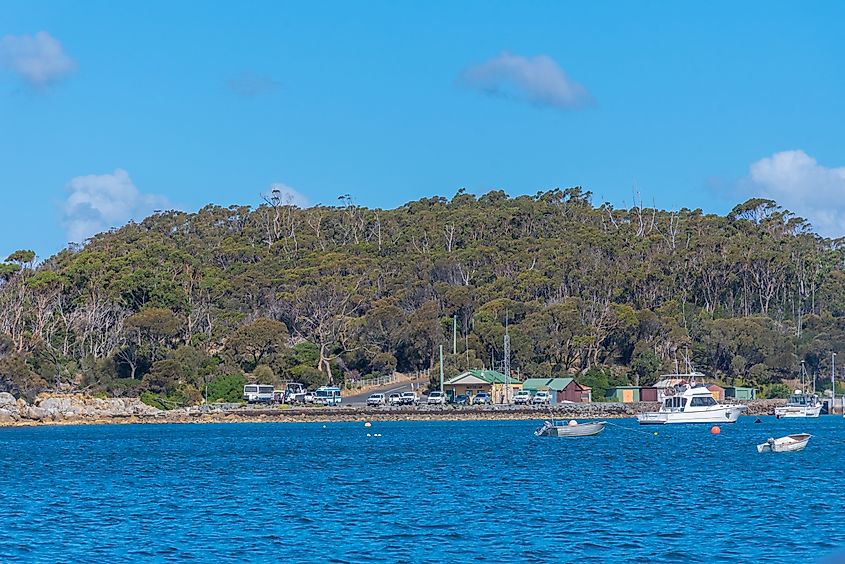
Doo Town is a vacation community, locally known as a “shack community” in Tasmania, made up of second homes. The origins of the community's iconic and quirky nature remain up for debate, but one popular story credits Hobart architect Eric Round. It’s believed that Round placed a nameplate on his shack stating “Doo I 99” and created a playful chain reaction that permanently stuck like glue. A neighbor joined in on the fun and responded with his own nameplate stating, “Doo Me.” The following neighbor posted “Doo Us,” and thus the name Doo Town was coined. Some question whether Round named all the shacks overnight or if a group of friends took inspiration after the catchphrase in The Three Musketeers, which they adored.
One of the top recommended activities for visitors is to spot as many “Doo” signs as possible around town. Along Pirates Bay, Doo Town is home to a beautiful landscape while seafood fishermen search the deep and squid catchers hoist out tentacles and ink onto the pier. In fact, a 238-pound southern bluefin tuna was caught near Doo Town. With its sweeping views of the Tasman Peninsula and playful atmosphere, Doo Town is a slice of quirky paradise.
Grindelwald

Grindelwald, in Tasmania’s Tamar Valley, features breathtaking panoramic views and whimsical Swiss-inspired architecture. Though relatively new—as it was deemed a locality in 1983—this charming settlement spans 150-acres, boasting an artificial lake, picturesque Swiss chalets, quirky shops, and delightful cafes. Named after the village in Switzerland, the town was founded by Dutch immigrant Roelf Vos after selling his supermarket chain to Woolworths. In 1980, Vos constructed the enchanting village around Lake Serene, among numerous other artificial lakes.
Home to the Tamar Valley Resort, which has been designed to match the Swiss village aesthetic decor in Grindelwald. Visitors can enjoy a range of attractions, including a variety of shopping and dining, an 18-hole mini golf course, and a 10-hole golf course. The resort also offers splash golf, paddle boat rentals, and canoeing excursions on the breathtaking Lake Serene. With an atmosphere that feels like a slice of the Swiss countryside, Grindelwald is a tranquil oasis and striking tourist destination.
Port Arthur
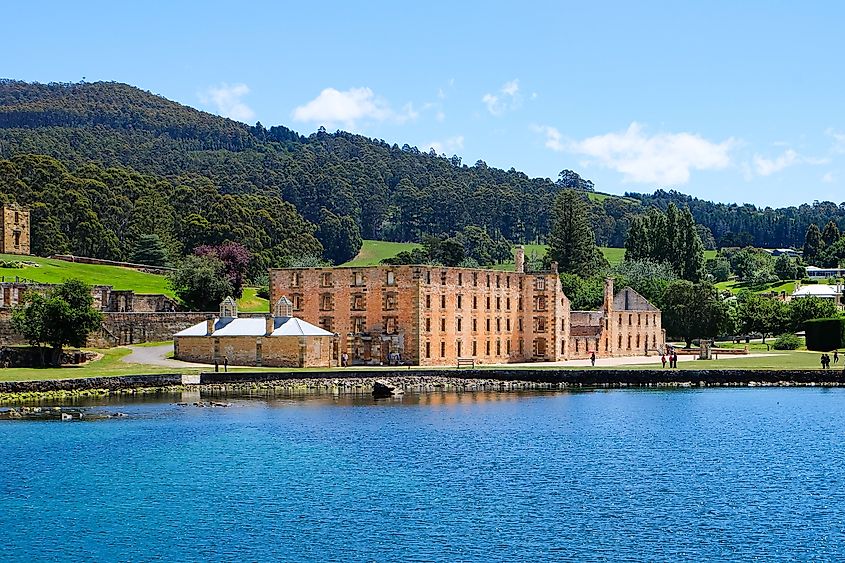
Port Arthur, in the heart of the Coal River Valley, is home to a unique history. Once a notorious penal colony for Australia’s convicts, this 19th-century penal settlement is now an open-air museum showcasing the ruins of more than 30 buildings, including a large penitentiary and roofless church, all constructed by inmates. Now a World Heritage Site, Port Arthur features acres of manicured gardens and large, striking buildings that stand in contrast to its dark history of using manual labor as punishment.
Established as an attempt to reform the convicts in the colony, approximately 12,500 convicts served sentences at Port Arthur between 1830 and 1877. This pivotal location in Tasmania's history offers various tours designed to explore different facets of its past. One tour concentrates on escape attempts, while another tour explores the site's overall history. There’s even a cemetery tour, where visitors can see the resting place of convicts, soldiers, and free settlers and hear their stories. Uniquely, Port Arthur also hosts an evening ghost tour, where guides wind through buildings and ruins alike by lantern light through ruins, sharing eerie stories of unexplained events.
Cygnet
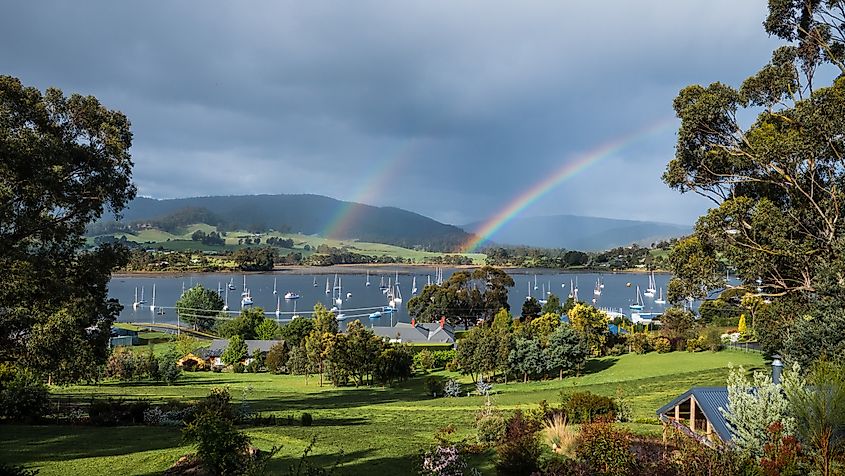
In a breathtaking fruit-growing country, Cygnet stands between the D’Entracasteaux Channel and the Huron River. The colorful apple and cherry orchards cover the surrounding hills like a patchwork quilt, making the town a haven for creatives. As the heart of Tasmania’s fruit-growing heritage, Cygnet showcases a variety of vineyards alongside orchards that produce old fruits like apples, pears, and cherries.
The quiet town is home to a variety of craft shops, studios, and galleries, further solidifying its reputation as a haven for artists and creatives alike. Cygnet’s vibrant community showcases local artwork and a lively music scene and hosts the annual Cygnet Folk Festival each January. known for its quirky and imaginative atmosphere, the coastal town is flourishing with wineries in a picturesque apple-growing region.
Cygnet also features its own art trail, complete with several galleries, waterfront parks, a local living history museum, and a bird sanctuary. At the southern end of town sits Burton’s Reserve, where the first orchards were planted, eventually blossoming in a thriving fruit-processing industry. Remnants of the original reserve buildings include the Weighbridge, the Bridge Cottage, and a shed, which still stand today. Scattered throughout town are historical features such as old steam engines, packing sheds, apple pickers’ huts, and dehydrating kilns, which add to Cygnet’s rustic and whimsical charm.
Evandale
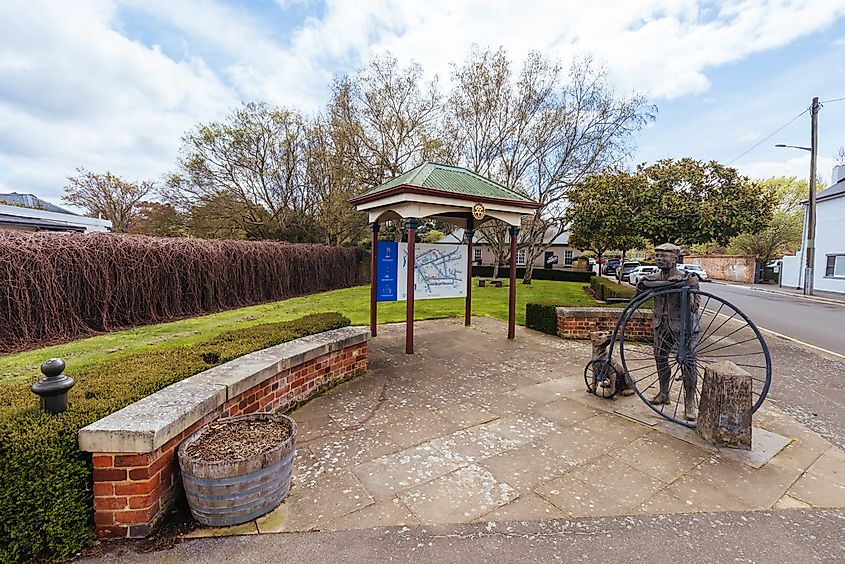
Evandale is a colonial town recognized by the National Trust as a certified Georgian Village, thanks to its impressively preserved late-Georgian and early Victorian architecture. In the heart of Glover Country— a reference to colonial painter John Glover, the father of Australian landscape painting— the town exudes a charming, village-like atmosphere. This makes it the perfect setting for the National Penny Farthing Championships, hosted in Evandale every February, where participants sport colonial costumes and compete in races. The Evandale Village Fair also features a program of penny-farthing bicycle races on a 4-lap, 1-mile circuit around the town.
Enthusiasts flock to Evandale from around the world to participate in a variety of championships, accompanied by food and produce stalls, live entertainment such as puppets, dancers, and pipe bands, as well as family activities including clowns, pony rides, vintage cars, and old machinery displays. One of Australia’s most prestigious landscape painting awards, the Glover Prize, is awarded annually for the best contemporary landscape painting of Tasmania. The exhibition of finalists is held in Evandale’s Falls Park pavilion, with approximately 40 works vying for the prize. The winner receives a bronze maquette of John Glover and a cash prize.
Just five miles south of Evandale is Clarendon House, one of Australia’s most romantic pastoral homesteads, built by James Cox and attributed to convict architect James Blackburn. Protected by the National Trust, this grand building features a two-story portico accompanied by formal grounds and gardens. The entrance is framed by a rare elm-lined avenue leading to the 17-acre estate, which includes an intact service wing, walled garden, and rural outbuildings. Clarendon House also hosts rotating exhibitions of historic fashion, complementing its range of furnishings dating from 1838 to 1850.
Sheffield
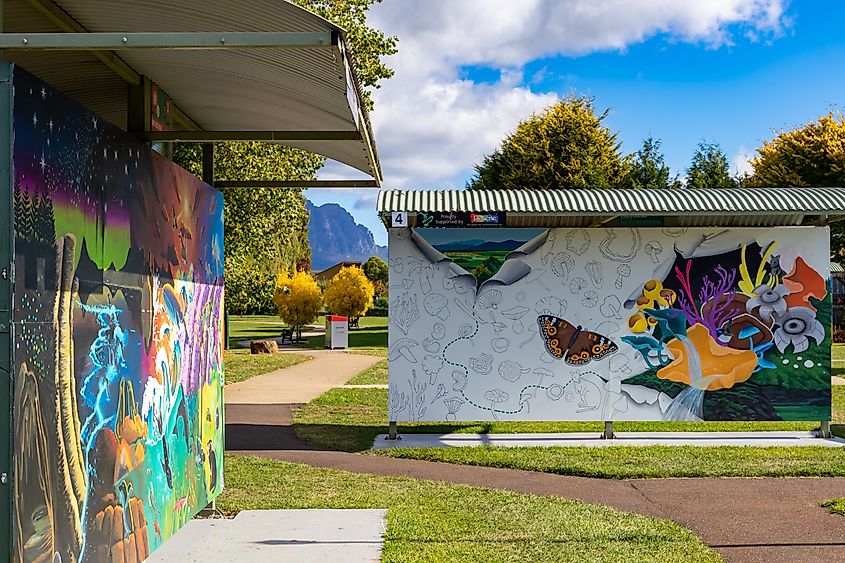
Sheffield, once an old industrial town, has since reinvented itself through culture and creativity. Known for its revival driven by steam and street art, the town offers a breathtaking backdrop of Mount Roland, whose summit provides views of nearby Cradle Mountain. As the closest town to this iconic geological feature, Sheffield is a gateway to Cradle Mountain’s premier natural beauty, with its mossy rainforests, river gorges, mountains, and moorlands creating captivating landscapes. The mountain is rich in Tasmanian wildlife, including the Tasmanian devil, quolls, echidna, and wombats. Visitors can also explore the Mole Creek Caves, winding through ancient limestone formations and discovering the glowworms that use the cave as their habitat.
Known as the “Town of Murals,” Sheffield has transformed its streets into an outdoor art gallery like no other, with murals adorning the streets and buildings. The town also celebrates its industrial and agricultural heritage with SteamFest, a festival featuring a variety of steam engines that offer rides every half hour, a light-horse regiment in traditional uniform, bullock-team demonstrations, tractor-pulling competitions, live music, and a conglomeration of stalls offering wares, crafts, and food.
Sheffield is also home to Tasmania’s Medieval Festival and the “Taste of the Northwest” event, which showcases the region’s seasonal harvest of honest, olive oil, and cider every spring and autumn. Nearby, visitors can explore Tasmania and the Village of Lower Crackpot, home to one of the worlds largest maze complexes, featuring a variety of bizarre attractions like The Three Bears Cottage, Cubby Town, and more, all set within winding pathways of white viburnum and yellow Chinese honeysuckle.
Bothwell

Bothwell, within Tasmania’s central highlands along the Clyde River, was originally settled by Scottish farmers in the 1820’s. The town features over 50 buildings made from local sandstone, all heritage sites due to their architectural and historical significance. One of Australia’s oldest churches, St. Luke’s, features eccentric stone heads carved by convict stonemason Daniel Herbert, who is also credited With the carved figures on Ross Bridge.
Bothwell is home to one of Australia’s premier whiskey distilleries, Nant Distillery, in the Nant Mill. The distillery uses local highland waters to purify its draught in its production process. The Tasmanian highlands are also home to Australia’s first golf course at Ratho Farm, where grazing sheep maintain the 18-hole fairway. The course is the perfect fusion between tradition and contemporary sport, even offering traditional hickory clubs for use.
In fact, golf is so deeply ingrained in the local culture that Bothwell hosts the Australian Golf Heritage Festival every May, where players don period costumes and tee off using traditional hickory clubs. Visitors can also explore the town's history through the Heritage Walk, exploring streets with tartan street signs, which feature a variety of buildings classified by the National Trust. Among these is Thorpe Watermill, a traditional water-driven flour mill that has retained its ability to operate in its original manner through the test of time. Alternatively, Wentworth House, one of Australia’s oldest imported colonial Georgian Homes, is also featured on the walk.
Ross
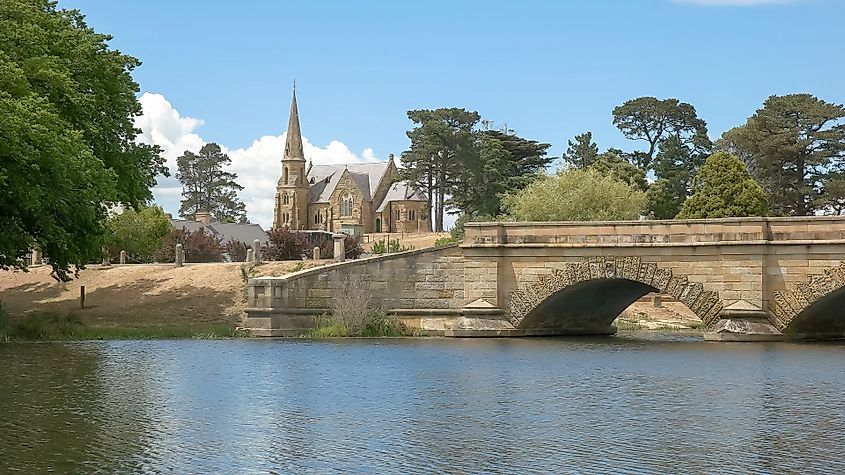
Hidden in the midlands of Tasmania, Ross Is a town known for its well preserved Georgian buildings that highlight its colonial history. The Macquarie River flows through the town, leading to the iconic sandstone Ross Bridge, expressing a stunning duality between peaceful scenery and and dramatic history. Ross’s military significance can be seen in many of its buildings, as it once served as a critical garrison town due to its strategic position as an access point between northern and southern Tasmania.
The town’s reliable water supply and fertile countryside made Ross an ideal location for its origins as a 20,000-acre agricultural hub and draft oxen ranch. Ross hosted the first agricultural show in the Midlands and has played a crucial role in a clash between horse exchange and livestock market. The streets of this heritage town are named after critical battles in the Napoleonic Wars, with a Main Street lined with picturesque stately elm trees.
One of Ross’s most quirky attractions can be found on Church Street, where two red phone boxes invite visitors to listen to heartwarming stories shared by the local spirited community. This unique feature provides an insight into the integrity and history of this delightful town.
Discover Tasmania’s Quirky Charm
From the artistic murals of Sheffield to the intrinsic history of Port Arthur, Tasmania is a haven of unique, whimsical towns, each with its own fascinating tale. These eight towns exemplify a delightful blend of creativity and eccentricity that are showcased through quirky festivals, captivating histories, and stunning landscapes. Tasmania is an enchanting destination for travelers seeking an adventure that goes beyond the ordinary and into the extraordinary, making it a truly enchanting destination for all travelers.



